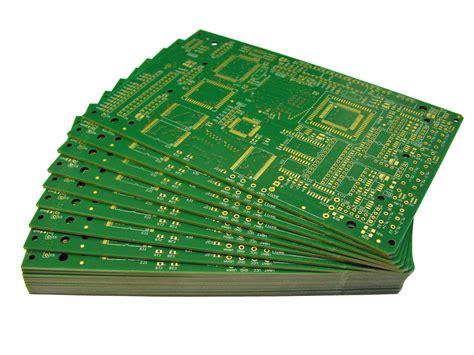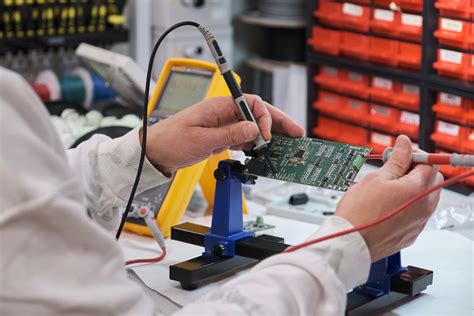Analysis of favorable and unfavorable factors affecting the development of the PCB industry
1.Favorable factors
(1) The continuous and strong support of national industrial policies guides the healthy development of the PCB industry
The electronic information industry is a strategic, basic and leading pillar industry that my country focuses on developing. The PCB industry is the most active and indispensable component of the electronic information industry and is strongly supported by national industrial policies. The State Council, the Ministry of Commerce, the Ministry of Industry and Information Technology, the National Development and Reform Commission, the Ministry of Science and Technology, etc. have formulated industrial policies such as the “Plan for the Adjustment and Revitalization of the Electronic Information Industry”, the “Catalogue of Encouraged Imported Technologies and Products”, the “Eleventh Five-Year Plan for the Development of Science and Technology in the Information Industry and the Outline of the Medium- and Long-Term Plan for 2020”, the “Guidelines for the Adjustment of Industrial Structure”, and the “Guidelines for the Key Areas of High-tech Industrialization for Current Priority Development”. New printed circuit boards and high-density printed circuit boards are regarded as new products that the country focuses on supporting. Good industrial policies will guide the PCB industry into a healthy development track.
(2) The rapid upgrading of products in the PCB application field promotes the rapid growth of the PCB industry
In the past decade, my country’s electronic information industry has developed rapidly and the scale of the industry has continued to expand. According to the data from the Ministry of Industry and Information Technology, in 2010, the scale of my country’s electronic information product manufacturing industry accounted for more than 30% of the global total, ranking first in the world. It has initially established an industrial system with complete categories, perfect industrial chain, strong foundation, optimized structure and continuously improving innovation capabilities. The proportion of industrial added value of the electronic information industry in the national GDP increased from 2.5% in 2001 to 5.3% in 2012. In 2012, my country’s electronic information industry achieved a main business income of 10.9 trillion yuan.
The upgrading trend of downstream application fields of PCB is prominent, and new products and new technologies in various fields have gradually entered the stage of large-scale replacement and popularization. In 2012, the output of major products such as mobile phones, computers, televisions, and integrated circuits in my country reached 1.18 billion units, 350 million units, 130 million units, and 82.31 billion units, respectively, with year-on-year growth of 4.3%, 10.5%, 4.8%, and 14.4%. In addition, electronic terminal products show four major development trends: intelligence, high definition, thin and miniaturized, and touchable. The sustained and rapid development of the electronic information industry has become a driving force for the development of my country’s PCB industry. PCB product varieties that can cater to the development trend of downstream application products have a broader market space.
(3) The global PCB industry is further transferred to China, promoting the technological upgrading of the PCB industry
From the development trends of various regions around the world, the production costs of European and American manufacturing industries, especially labor costs, are constantly rising, and electronic products have entered an era of low profits. Asia, especially mainland China, has attracted the transfer of global manufacturing industries with its superiority in labor, resources, and policies, and has formed a huge supporting market and demand space in related industrial chains such as electronic products. European and American PCB manufacturing companies have also further transferred their output value to China and other parts of Asia by opening factories and transferring orders. China has gradually developed into a global PCB manufacturing center, which will help improve the technical and management levels of domestic printed circuit board manufacturers, thereby further promoting the healthy development of the industry.
(4) A complete information industry chain system promotes the development of the PCB industry
China’s electronic information industry has maintained a rapid development momentum and has become the world’s most important electronic manufacturing base. China’s electronic industry chain is becoming more and more complete, larger in scale, and stronger in supporting capabilities. The PCB industry is a key electronic basic industry and plays a key role in the industrial chain. The complete industrial chain enables PCB companies to quickly purchase raw materials and respond to customer needs quickly, allowing companies to move forward on a healthy development track.
2.Unfavorable factors
(1) There is a certain technological gap with developed countries
From the perspective of industrial scale, China is already a large PCB manufacturing country, but not a PCB manufacturing powerhouse. Compared with developed countries such as Japan, Europe and the United States, there is a certain gap. For example, Japan is a global leader in the manufacture of HDI boards and packaging substrates. The production capacity of my country’s PCB industry in high value-added products such as HDI boards and packaging substrates is relatively small, and product manufacturing technology and processes need to be further improved.
(2) Weak basic technology research and development
The R&D investment of domestic PCB companies is insufficient compared with their foreign counterparts. The lack of R&D funding has led to weak domestic PCB basic technology research and development, a lack of scientific research personnel, and insufficient basic education and training for relevant technical personnel and workers. The lack of professional and skilled workers has become an important factor restricting the further development and growth of e industry.







